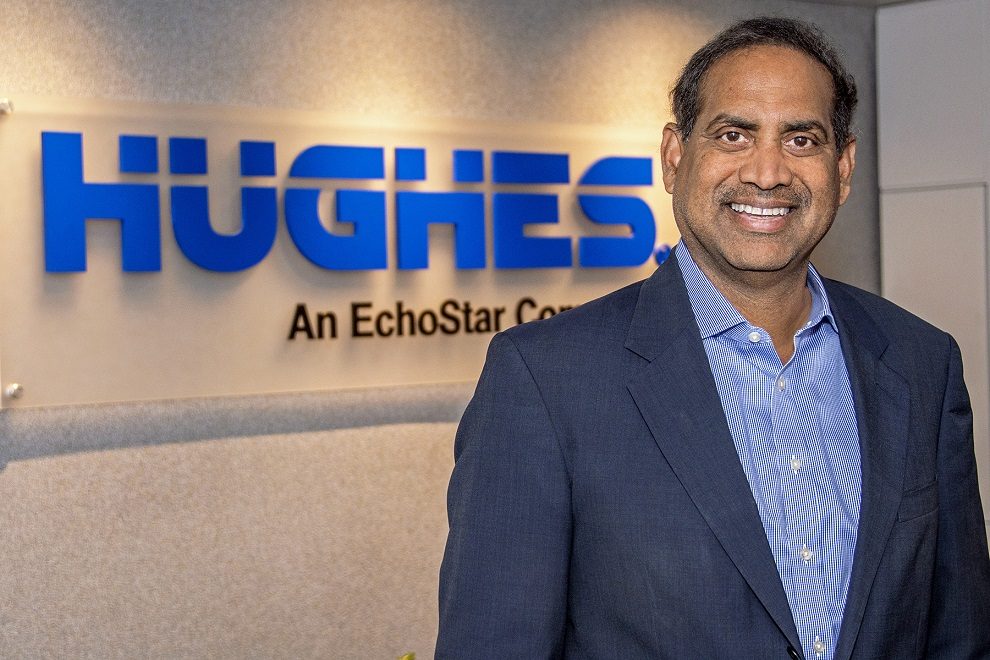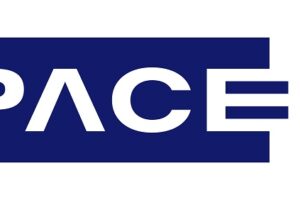Khalid Athar: What are the most important factors Hughes looks at before forming a partnership?
Ramesh Ramaswamy: Hughes is celebrating 50 years since its inception in 2021! As we look back over the decades, we have a history of partnering with other industry leaders. Often those partnerships begin with us providing the technology that enables our customers’
service, as we did in 1975, when we sold the first commercial high-speed TDMA system to Telesat. A more recent example is our supplying of gateway and core module technology to OneWeb. Similarly, our relationship with Yahsat began with a technology and services partnership.
We supplied JUPITER™ System ground networking technology and operational support to enable Yahsat services in Africa and the Middle East. When looking at opportunities for partnerships like this, we look for strategic opportunities where Hughes can bring significant value based on our experience as a service provider.
KA: How are Hughes and Yahsat delivering reliable, high-speed broadband service to unserved and underserved populations across Africa and the Middle East through its partnership?
RR: Through this joint venture, Hughes and Yahsat operate under the YahClick brand to connect unserved and underserved communities across Africa and the Middle East with satellite broadband. The service is delivered over Yahsat’s Al Yah 2 (AY2) and Al Yah 3 (AY3) Ka-band satellites – which cover more than 1 billion people and leverage the capabilities of the Hughes JUPITER™ System. The system is now enabled across all AY2 and AY3 beams, delivering the highest capacity per Megahertz. Whether it’s individual terminals, community Wi-Fi or cellular backhaul, the JV seamlessly merges Hughes and Yahsat’s technical and operational expertise to link thousands of people and enterprises in regions where terrestrial broadband options do not reach or are simply too expensive.
In addition to connecting new users, YahClick continues to optimize the network to serve customers’ ongoing connectivity needs. The COVID-19 pandemic caused significant shifts in network traffic patterns like longer peak hours and higher demand for video streaming and
collaboration applications as users ramped up their online activity. The Hughes JUPITER™ System features advanced ground networking technology that can quickly adapt, across both software and functionality, to meet changing user demand.
KA: What were the steps taken to merging the operations of the 3 satellites in Brazil?
RR: Following our success in Africa and the Middle East, Hughes and Yahsat partnered in a joint venture in Brazil, this one under the Hughes do Brasil brand. The program combines the Ka-band satellite capacity on Hughes 65 West and Hughes 63 West, as well as the payload over Brazil on the Al-Yah 3 High-Throughput Satellite – which we call Hughes 20 West. Together, the three satellites reach more than 95 percent of Brazil’s population.
Seamlessly integrating all three satellites into one operation was no easy feat – it required detailed planning and effort. Yahsat used different systems and equipment so the first task was to migrate the existing 20,000 satellite internet subscribers on Hughes 20 West to the JUPITER System. Next, Hughes incorporated Yahsat’s existing network of 20 regional distributors and approximately 400 dealers into our program – including creating new contracts and conducting trainings on Hughes systems and processes. The team also conducted a promising pilot test and will soon roll out a HughesNet® Voice service so that subscribers in rural areas can make and receive calls.
While the pandemic posed an additional hurdle to our integration efforts, Hughes and Yahsat teams successfully merged operations in just a few months.
KA: How important is the emphasis on expanding cell backhaul service and the enterprise business?
RR: Hughes and Yahsat keep a constant pulse on market needs. Cellular backhaul and managed enterprise services are two areas where we anticipate continued growth across Africa, the Middle East and Brazil.
For cellular operators, the prohibitive cost of backhauling traffic over terrestrial networks presents a major barrier to expanding service in rural areas – particularly when the expense of land-based connectivity options like fiber and cable is directly proportional to distance.
Yet, according to Statista, nearly half the world’s population has a smartphone and roughly half of all global internet access is through mobile devices. Next-generation HTS and associated ground networking solutions present operators with a viable path to profitable expansion while meeting the connectivity needs of people who otherwise would not have access.
Hughes currently supports cellular backhaul service to more than 12,000 sites across Africa, Asia and Latin America, powering satellite internet for millions of people and enabling more than 40,000 community Wi-Fi hotspots across the same regions. In fact, our JUPITER System is the leading satellite ground system in the world, with more than 50 percent market share. As the de facto standard for satellite implementations, the JUPITER System powers broadband solutions on more than 40 conventional and high-throughput satellites globally.
On the enterprise side, network demand is at an all-time high as more users, devices and applications come online. The influx of activity strains distributed enterprises’ networks and puts a greater burden on IT resources. Managed network services, like the HughesONTM Managed Services, play a critical role in helping enterprises successfully secure, transform and grow their businesses to meet evolving consumer needs. Hughes manages nearly half a million enterprise sites globally and has a track record of creating industry-defining solutions. We are the first managed network services provider to deliver a self-healing edge capability that leverages artificial intelligence and machine learning algorithms to enterprise customers. Failure at the edge can bring down services across an enterprise’s endpoints for hours, impacting revenue-generating activity (think: credit card transactions and online commerce) and the all-important customer experience.
In response, Hughes created an artificial intelligence (AI) for IT operations (AIOps) solution for enterprise Wide Area Network (WAN) edge systems that automatically prioritizes network data, predicts traffic and applies triage – resulting in higher-performing enterprise networks.
KA: How valuable would you rate partnerships, especially in context to how services were expanded in Brazil?
RR: Every stakeholder in the industry – telecom leaders, governments and regulators – plays an important role in bridging the connectivity gap. Partnerships amplify the impact of each player’s efforts, connecting unserved or underserved populations quicker, smarter and more cost-effectively. This year marks ten years since Hughes and Yahsat began working together.
We’re proud of the great strides we’ve made together in delivering satellite broadband to thousands of communities across Africa, the Middle East and now Brazil. Hughes and Yahsat in Brazil actually began as competitors in the consumer market but soon realized joining forces could help better serve users in the region and meet growing market demand.
Partnerships are essential in this industry, and at Hughes we pride ourselves on working with other operators in the industry – many of whom are also competitors in some markets. Similarly, partnerships with public sector organizations and governments are essential to bridging the digital divide. For example, in Indonesia, BAKTI, a division of the Indonesian Ministry of Communications and Information, launched an initiative to deploy Hughespowered satellite connectivity across 8,000 cellular and Internet access sites.
Botswana Telecommunications Corporation mirrored BAKTI’s efforts, using satellite (and the Hughes JUPITER System) to expand high-speed broadband service across the country with hundreds of remote terminals connecting businesses and homes.
Whether it’s with private or public entities, Hughes forges partnerships with one goal in mind: to expand affordable Internet access to areas historically lacking connectivity.
KA: How is Hughes continuing to bridge the digital divide and adapting to increasing connectivity demand across Africa, the Middle East, and Southwest Asia?
RR: No technology can close the global connectivity gap on its own. Doing so will require a collaborative effort by all internet service providers (ISPs) harnessing the power of the latest technologies affordably and reliably for everyone. Satellite is an essential part of that mix.
At Hughes, we are working hard – on both a domestic and global level – to expand satellite Internet access for consumers and small businesses, innovating new ways to make connectivity more affordable (like community Wi-Fi) and forming technology partnerships. We are currently building our next-generation ultra-high-density JUPITER 3 satellite, which will likely be the largest satellite constructed to date.
The new satellite will provide more than 500 Mbps capacity, bringing our entire Ka-band fleet to more than a terabit of capacity across the Americas, where we know our customers and prospects need it. JUPITER 3 will enable service plans with speeds of up to 100 Mbps and also support enterprise, government, aero and maritime mobility providers as well as extend network reach through cellular backhaul and community Wi-Fi hotspot services. Satellite-enabled community Wi-Fi brings internet access to hotspots in community centers, schools or shops where multiple users can share the cost. Hughes works with various private and public organizations worldwide to bring affordable Internet solutions to remote populations – including our joint venture with Yahsat. Additionally, through our collaboration with Facebook Connectivity, Hughes is rapidly expanding community Wi-Fi hotspots across Latin America, enabling people in more than 1,500 underserved communities to reach the Internet. In all, Hughes technology powers nearly 40,000 community Wi-Fi hotspots that provide Internet access to more than 25 million people.
In mobile-first parts of the world, many operators use satellite to backhaul traffic from rural towers to their network cores. Hughes works with operators to deliver 2G, 3G and 4G/LTE services in a cost-effective way, increasing access to affordable connectivity. As examples, our partnerships with Reliance Jio and Airtel India enhance accessibility in India as do our efforts with Speedcast in Nicaragua and the Philippines. Altogether, Hughes technology powers more than 12,000 backhaul sites around the world.
KA: What impact did the COVID-19 pandemic have on Hughes?
RR: The Internet continues to serve as a lifeline for millions around the world as the pandemic persists. At Hughes, we have always known that our services enable essential connectivity. We continue to see traffic on the HughesNet® network increase dramatically in all our service areas: the U.S., Mexico, Brazil, Chile, Colombia, Ecuador and Peru.
In the enterprise market, distributed businesses such as restaurant chains, retailers, gas stations and even government offices rely on their networks more than ever to accommodate changes to their operations because of the pandemic. From online ordering, contactless payments, home delivery and curbside pick-up, our HughesONTM team works closely with enterprise customers to ensure their networks are fully optimized and secure as any disruption could hinder business sales.
Operationally, Hughes has maintained business continuity for our customers around the world. While many of our employees are working from home, essential in-office personnel have been on-site throughout the pandemic. Our installers have also been working in the field to connect new customers and service existing ones across our consumer and enterprise businesses around the world. Throughout our facilities, our team members worldwide follow the latest COVID-19 health and safety guidelines from the U.S. Centers for Disease Control (CDC), the World Health Organization (WHO), and national and local governments.












